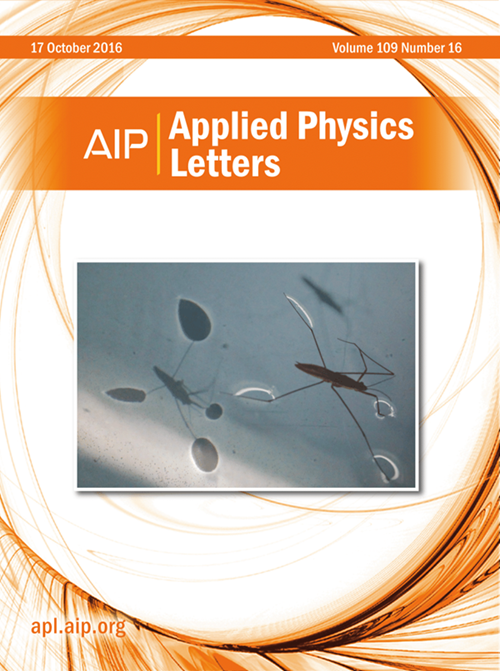键合β 12-硼苯/杂化蜂窝状- kagome硅烯异质结构:一种结构稳定的高容量钠离子电池阳极
IF 3.5
2区 物理与天体物理
Q2 PHYSICS, APPLIED
引用次数: 0
摘要
下一代储能系统的发展迫切需要具有优异离子存储能力和结构坚固性的阳极材料。与传统的二维(2D)单层膜相比,键合异质结构通过界面相互作用协同稳定晶格框架,具有明显的优势。蜂窝状和蜂窝状结构组成的二维杂化晶格由于其独特的几何形状和定制的电子状态而引起了人们的广泛关注。在此,通过第一性原理计算,我们提出了一种强键合的β12-硼苯(β12-B)/杂化蜂巢状硅烯(hhk-Si)异质结构作为锂/钠离子电池(LIBs/SIBs)的高性能阳极。机器学习加速从头算分子动力学模拟延长了100 ps的时间框架,证明了这种键合构型与范德华构型相比具有优越的结构稳定性。该异质结构在多离子插入过程中表现出固有的结构稳健性,加上具有超低扩散势垒的稳定吸附位点(Li: 0.35 eV;Na: 0.20 eV)。值得注意的是,预测的最大钠存储容量达到1823 mAh/g,优于单层和大多数二维异质结构。这些发现表明,所提出的β12-B/hhk-Si是一种很有前途的sib阳极,并为kagome -蜂窝混合晶格在储能领域的应用铺平了道路。本文章由计算机程序翻译,如有差异,请以英文原文为准。
Bonded β 12-borophene/hybrid honeycomb–kagome silicene heterostructure: A high-capacity anode with robust structural stability for Na-ion batteries
The development of next-generation energy storage systems critically demands anode materials with exceptional ion storage capacity and structural robustness. Bonded heterostructures offer distinct advantages over conventional two-dimensional (2D) monolayers by synergistically stabilizing lattice frameworks through interfacial interactions. 2D hybrid lattices composed of honeycomb and kagome structures have garnered significant attention due to their unique geometries and tailored electronic states. Herein, via first-principles calculations, we propose a strongly bonded β12-borophene (β12-B)/hybrid honeycomb–kagome silicene (hhk-Si) heterostructure as a high-performance anode for lithium/sodium-ion batteries (LIBs/SIBs). This bonded configuration exhibits superior structural stability compared to van der Waals counterparts, as evidenced by machine learning-accelerated ab initio molecular dynamics simulations spanning an extended 100 ps timeframe. The heterostructure demonstrates intrinsic structural robustness during multi-ion intercalation, coupled with stable adsorption sites featuring ultralow diffusion barriers (Li: 0.35 eV; Na: 0.20 eV). Notably, the predicted maximum sodium storage capacity reaches 1823 mAh/g, outperforming both monolayers and most 2D heterostructures. These findings suggest that the proposed β12-B/hhk-Si is a promising anode for SIBs and paves the way for kagome–honeycomb hybrid lattices in energy storage applications.
求助全文
通过发布文献求助,成功后即可免费获取论文全文。
去求助
来源期刊

Applied Physics Letters
物理-物理:应用
CiteScore
6.40
自引率
10.00%
发文量
1821
审稿时长
1.6 months
期刊介绍:
Applied Physics Letters (APL) features concise, up-to-date reports on significant new findings in applied physics. Emphasizing rapid dissemination of key data and new physical insights, APL offers prompt publication of new experimental and theoretical papers reporting applications of physics phenomena to all branches of science, engineering, and modern technology.
In addition to regular articles, the journal also publishes invited Fast Track, Perspectives, and in-depth Editorials which report on cutting-edge areas in applied physics.
APL Perspectives are forward-looking invited letters which highlight recent developments or discoveries. Emphasis is placed on very recent developments, potentially disruptive technologies, open questions and possible solutions. They also include a mini-roadmap detailing where the community should direct efforts in order for the phenomena to be viable for application and the challenges associated with meeting that performance threshold. Perspectives are characterized by personal viewpoints and opinions of recognized experts in the field.
Fast Track articles are invited original research articles that report results that are particularly novel and important or provide a significant advancement in an emerging field. Because of the urgency and scientific importance of the work, the peer review process is accelerated. If, during the review process, it becomes apparent that the paper does not meet the Fast Track criterion, it is returned to a normal track.
 求助内容:
求助内容: 应助结果提醒方式:
应助结果提醒方式:


